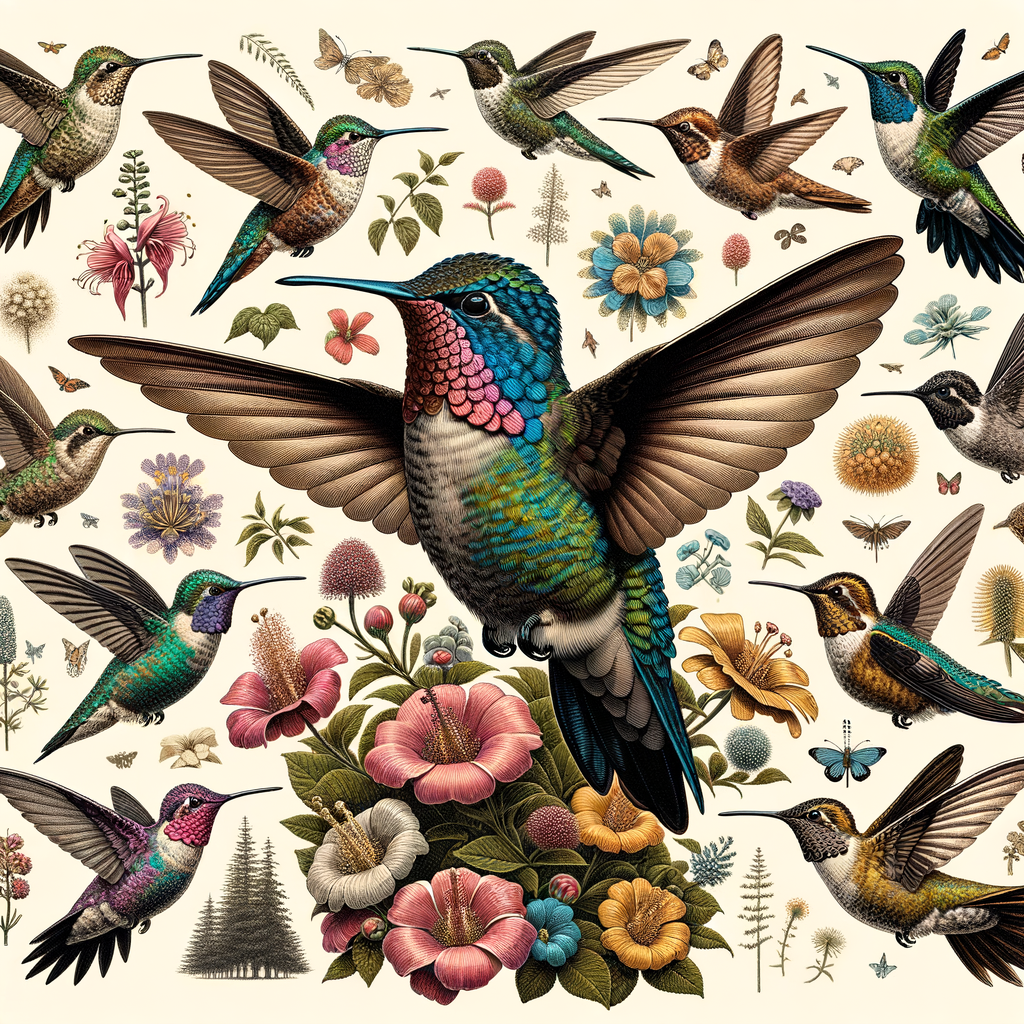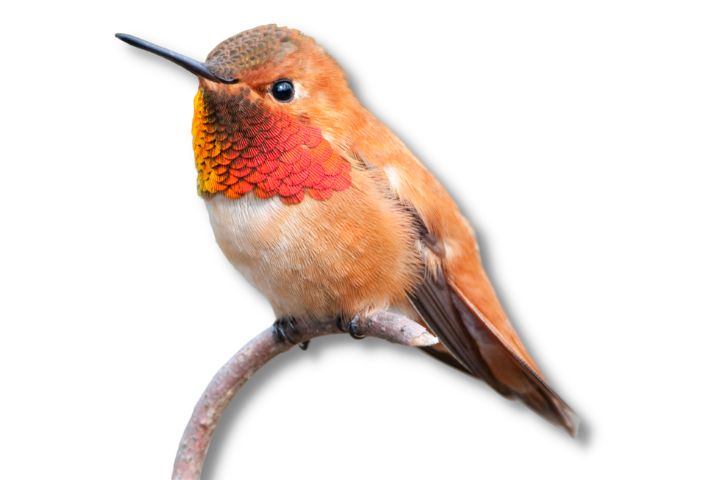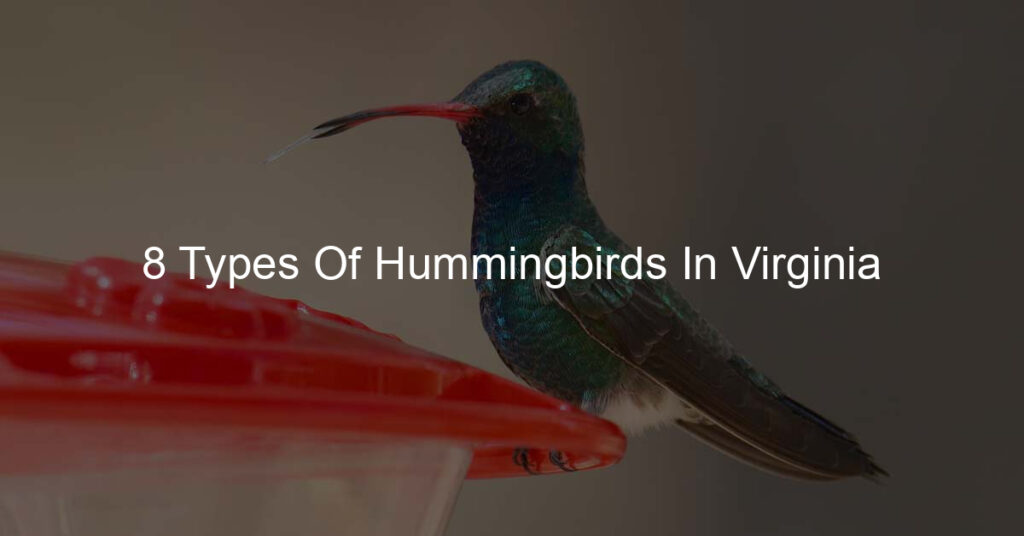Introduction to Hummingbirds in Virginia
Virginia, a state rich in biodiversity, is home to a fascinating variety of bird species. Among these, hummingbirds hold a special place due to their unique characteristics and significant role in the ecosystem. This article provides an overview of hummingbirds found in Virginia and discusses their importance to the state’s ecosystem.
Overview of Virginia’s Hummingbird Species
Virginia is home to several species of hummingbirds. The most common is the Ruby-throated Hummingbird, known for its bright red throat and swift flight. Other species, such as the Rufous Hummingbird and the Black-chinned Hummingbird, are less common but equally fascinating. These tiny birds, despite their size, are known for their incredible endurance and speed, capable of flying at speeds up to 60 miles per hour and beating their wings more than 50 times per second. They are also known for their iridescent feathers, which change color depending on the angle of light.
Importance of Hummingbirds in Virginia’s Ecosystem
Hummingbirds play a crucial role in Virginia’s ecosystem. They are excellent pollinators, transferring pollen from one flower to another as they feed on nectar. This helps in the reproduction of plants, contributing to the biodiversity of the region. Additionally, hummingbirds also control the population of insects by feeding on them, thus maintaining a balance in the ecosystem. Their presence is an indicator of a healthy environment, as they thrive in areas with abundant flowers and insects.
In conclusion, hummingbirds are not just beautiful creatures to observe but also vital contributors to Virginia’s ecosystem. Their presence enhances the state’s biodiversity and indicates the health of the environment. So, the next time you spot a hummingbird in your backyard, remember, you are witnessing a tiny but mighty force of nature.
Types of Hummingbirds Found in Virginia

Ruby-Throated Hummingbird
Characteristics
The Ruby-Throated Hummingbird is a small bird with a length of about 7 to 9 cm. It is known for its glittering green upper body and grayish white lower body. The males have a distinctive ruby-red throat, which is not present in females and young birds. They weigh approximately 3 grams, which is about the same as a penny!
Habitat
Ruby-Throated Hummingbirds are commonly found in open woodlands, gardens, and orchards. They are native to Virginia and are the most common hummingbird species in the area. They prefer areas with plenty of flowers for nectar, their primary food source. You can attract these beautiful birds to your backyard by planting native flowering plants or setting up a hummingbird feeder.
Behavior
Ruby-Throated Hummingbirds are solitary and territorial birds. They are known for their fast and agile flight. With wings that beat up to 53 times per second, they can hover in mid-air, fly forwards, or even backwards! They migrate alone over long distances, with some flying non-stop over the Gulf of Mexico. During the breeding season, males perform a fascinating display of aerial acrobatics to attract females.
Black-Chinned Hummingbird
The Black-Chinned Hummingbird is another fascinating species that can be found in Virginia. Let’s explore its unique characteristics, habitat, and behavior.
1. Characteristics
The Black-Chinned Hummingbird, scientifically known as Archilochus alexandri, is a small bird with a length of about 3.5 inches and a wingspan of approximately 4.5 inches. The male is recognizable by its black chin and lower throat, which can shine a beautiful purple in the right light. The females, on the other hand, are less colorful with a green upper body and a grayish-white lower body. Learn more about the Black-Chinned Hummingbird on Wikipedia.
2. Habitat
These hummingbirds prefer semi-arid regions and can often be found in mountainous areas, canyons, and along streams. They are migratory birds, spending their winters in Mexico and the southern United States, including Virginia.
3. Behavior
Black-Chinned Hummingbirds are known for their agility and speed. They can hover in mid-air, fly backwards, and even upside down! They feed on nectar from flowers and small insects. Males are known to be very territorial and will often chase away other hummingbirds from their feeding areas.
Here’s a quick summary of what we’ve learned about the Black-Chinned Hummingbird:
| Characteristic | Description |
|---|---|
| Size | 3.5 inches in length, 4.5 inches wingspan |
| Color | Black chin and lower throat in males, green upper body and grayish-white lower body in females |
| Habitat | Semi-arid regions, mountainous areas, canyons, along streams |
| Behavior | Agile, fast, can hover in mid-air, fly backwards and upside down, feeds on nectar and small insects, territorial |
Understanding these details about the Black-Chinned Hummingbird can enhance your bird watching experience in Virginia. Keep an eye out for this fascinating species on your next adventure!
Hummingbird Identification in Virginia

Being able to identify hummingbirds in Virginia is a rewarding experience. It’s like a treasure hunt, where the prize is the sight of these tiny, fast-moving birds. Let’s explore the key features that can help you identify hummingbirds and common mistakes to avoid during identification.
Identifying features of hummingbirds
Hummingbirds are unique and have several distinct features that set them apart from other birds. Here are some characteristics to look out for:
Size and Shape: Hummingbirds are small birds, typically measuring between 3-5 inches in length. They have a compact and stocky body with a short, straight beak.
Color: Hummingbirds are known for their vibrant colors. The males are usually more colorful than the females, with bright iridescent feathers that can change color depending on the angle of the light.
Flight Pattern: Hummingbirds are the only birds that can fly backwards. They have a unique hovering flight pattern, where they flap their wings in a figure-eight pattern at an incredible speed, up to 80 times per second.
Sound: The humming sound they produce during flight is a good indicator of their presence. This sound is produced by the rapid flapping of their wings.
Common mistakes in hummingbird identification
While identifying hummingbirds can be a thrilling experience, it’s easy to make mistakes. Here are some common errors to avoid:
Misidentifying based on color: The color of a hummingbird’s feathers can change depending on the light, which can lead to misidentification. It’s important to consider other features like size, shape, and flight pattern along with color.
Confusing males and females: Male and female hummingbirds of the same species often have different coloration. This can lead to confusion, especially for beginners. Always consider the gender differences within the same species.
Overlooking behavior: Observing a hummingbird’s behavior, such as feeding habits and flight pattern, can provide valuable clues for identification. Overlooking these behaviors can lead to mistakes.
Identifying hummingbirds in Virginia can be a fun and educational activity. With patience and practice, you’ll soon be able to spot these beautiful creatures with ease.
Native Hummingbirds of Virginia
Virginia, a state rich in biodiversity, is home to a variety of hummingbird species. These tiny, vibrant birds are a delight to watch and play a crucial role in the ecosystem. In this section, we will explore the species of hummingbirds native to Virginia and discuss their conservation status.
Species native to Virginia
The most common hummingbird species native to Virginia is the Ruby-throated Hummingbird. This bird is easily recognizable by its bright red throat, green upper parts, and grayish white lower parts. Another species that occasionally visits Virginia is the Rufous Hummingbird, known for its fiery orange and brown plumage. However, it’s important to note that the Rufous Hummingbird is not a permanent resident and is usually seen during migration periods. Learn more about the Ruby-throated Hummingbird here.
Conservation status of native species
The Ruby-throated Hummingbird is currently listed as a species of least concern by the International Union for Conservation of Nature (IUCN). This means that the species is not considered to be facing a risk of extinction. However, like all wildlife, they are affected by habitat loss and changes in their environment. It’s crucial for us to continue conservation efforts to ensure these beautiful birds continue to thrive. Learn more about conservation status here.
In conclusion, Virginia’s native hummingbirds are a vital part of the state’s biodiversity. By understanding more about these species and their conservation status, we can contribute to their preservation and enjoy their presence for generations to come.
Bird Watching in Virginia
Virginia is a haven for bird watchers, with its diverse habitats attracting a variety of species. One of the most fascinating birds to observe is the hummingbird, known for its rapid wing movement and vibrant colors.
Best Places for Hummingbird Watching
Location 1: Shenandoah National Park
This park offers a rich variety of flora that attracts hummingbirds, especially during the migration season.
Location 2: Chincoteague National Wildlife Refuge
This refuge is another excellent spot for hummingbird watching, particularly in the early morning and late afternoon when these birds are most active.
Tip 1: Bring Binoculars
A good pair of binoculars will help you spot hummingbirds from a distance without disturbing them.
Tip 2: Wear Muted Colors
Bright colors can scare away hummingbirds. Wearing muted colors can help you blend into the environment and observe these birds more closely.
Common habitats of hummingbirds in Virginia
Hummingbirds in Virginia are often found in areas with abundant flowering plants, as they feed on nectar. They also prefer areas near water sources.
How habitat affects hummingbird behavior
The availability of food and water in a habitat directly affects hummingbird behavior, including their feeding patterns and migration routes.
Hummingbirds’ role in Virginia’s wildlife
Hummingbirds play a crucial role in pollination, helping to maintain the biodiversity of Virginia’s ecosystems.
Interactions between hummingbirds and other species
Hummingbirds often interact with other species, such as bees and butterflies, in competition for nectar. They also have predators like hawks and cats.
Migration patterns of Virginia’s hummingbirds
Most of Virginia’s hummingbirds migrate to Central America during the winter. They typically return in the spring when food sources become plentiful again.
How to support migrating hummingbirds
Providing feeders with sugar water can help support migrating hummingbirds. Planting native flowering plants in your garden can also attract these birds.







